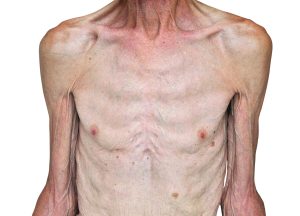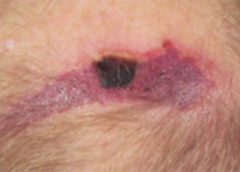Search Results for: Me
Clinician Resources: Nutrition, Treatment Algorithms, Pressure Ulcer Prevention
Check out these resources for your practice.
Be a nutrition champion
One in three patients enters a hospital malnourished. Fight malnutrition by viewing six short videos from the Alliance to Advance Patient Nutrition, including “Rapidly Implement Nutrition Interventions” and “Recognize and Diagnose All Patients at Risk of Malnutrition.” The videos show how to collaborate with the care team to become champions of nutrition and help improve patient outcomes. Watch the videos online or download them for later viewing. (more…)
Read MoreComprehensive skin assessment
By Nancy Morgan, RN, BSN, MBA, WOC, WCC, DWC, OMS
Each issue, Apple Bites brings you a tool you can apply in your daily practice. Here’s an overview of performing a comprehensive skin assessment.
In the healthcare setting, a comprehensive skin assessment is a process in which the entire skin of a patient is examined for abnormalities. It requires looking at and touching the skin from head to toe, with a particular emphasis on bony prominences and skin folds. Comprehensive skin assessment is repeated on a regular basis to determine whether changes in the skin’s condition have occurred. The goal of a skin assessment is to identify problem areas promptly for treatment and prevention. (more…)
Read MoreCase study: Early detection and treatment resolves a deep tissue injury
By Todd Zortman, RN, WCC, and James Malec, PhD
Pressure ulcers are a chronic healthcare burden for both patients and providers. Over 2.5 million patients in the United States are affected annually by pressure ulcers, with nearly 60,000 of those cases directly resulting in death. From a provider’s perspective, the cost of individual care ranges anywhere from $500 to $70,000 per pressure ulcer, which translates to annual costs in the U.S. approaching $11 billion. (more…)
Read MoreCase study: Working under a time crunch in a short-stay facility
By Janet Wolfson, PT, CWS, CLT-LANA
After landing my dream job as the wound care coordinator at an inpatient rehabilitation facility (IRF), I found myself trying to determine how much healing could be achieved for our more challenging patients, given the constraints of reimbursement and what can be done in the typical 10 to 14 days of a patient stay.
Here’s an example of how I worked with our team to help one of these challenging patients. (more…)
Read MoreNew study compares DFU treatment healing rates
Helping patients overcome ostomy challenges
By Beth Hoffmire Heideman, MSN, RN
No one wants an ostomy, but sometimes it’s required to save a patient’s life. As ostomy specialists, our role is to assess and intervene for patients with a stoma or an ostomy to enhance their quality of life. We play an active role in helping patients perform self-care for their ostomy and adjust to it psychologically, starting even before surgery. (more…)
Read MoreClinical Notes : Diabetes, medical honey, silver dressings, clostridium
Guidelines for optimal off-loading to prevent diabetic foot ulcers
“The management of diabetic foot ulcers through optimal off-loading,” published in the Journal of the American Podiatric Medical Association, presents consensus guidelines and states the “evidence is clear” that off-loading increases healing of diabetic foot ulcers.
The article calls for increased use of off-loading and notes that “current evidence favors the use of nonremovable casts or fixed ankle walking braces as optimum off-loading modalities.” The authors reviewed about 90 studies. (more…)
Read MoreHome
Assessment
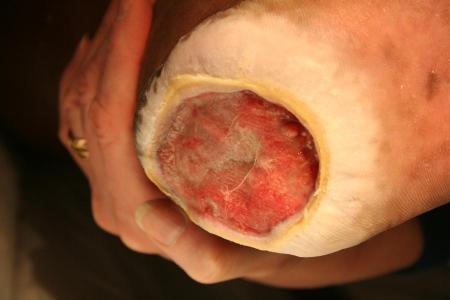
Accuracy of the Ankle-brachial Index in the Assessment of Arterial Perfusion of Heel Pressure Injuries
Abstract: Background. The evaluation and treatment of heel pressure injuries are a significant and expensive sequela of the aging population. Although the workup of patients with lower extremity tissue loss usually involves an assessment of the arter…
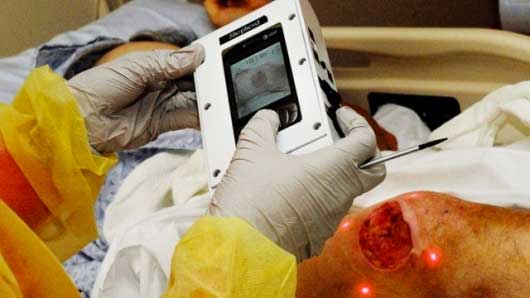
Wound Photography – How it Benefits Clinical Documentation
Accurate assessment and documentation of wounds is essential for developing a comprehensive plan of care. Photography now plays a key role in wound care. The use of digital photography has enhanced the reliability and accuracy of wound documentation.…
Skin Care & Treatment
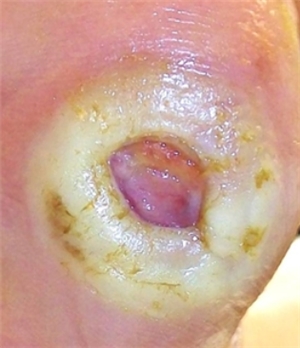
Wound exudate types
BY: NANCY MORGAN, RN, BSN, MBA, WOCN, WCC, CWCMS, DWC What exactly is wound exudate? Also known as drainage, exudate is a liquid produced by the body in response to tissue damage. We want our patients’ wounds to be moist, but not overly moist. The t…

Long-Term Outcome of Pediatric Traumatic Wound Repair: Suture Versus Tissue Adhesive
Summary This project is an observational trial investigating wound cosmetic appearance after repair of traumatic skin lacerations in the head area of pediatric patients with two different approaches to skin closure: sutures versus tissue adhesive. P…
Pressure Injury
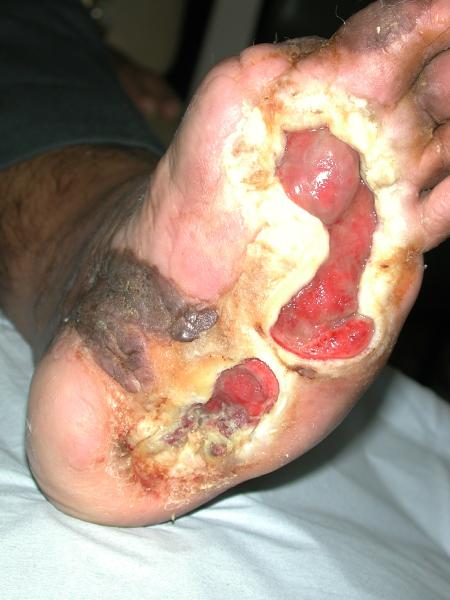
Gene Therapy for Non-Healing Diabetic Foot Ulcers Starts Phase III Trial
Safety and Efficacy Study of VM202 in the Treatment of Chronic Non-Healing Foot Ulcers. This study will assess the safety and efficacy of using gene therapy via intramuscular injections of the calf for patients with chronic non-healing foot ulcers. …
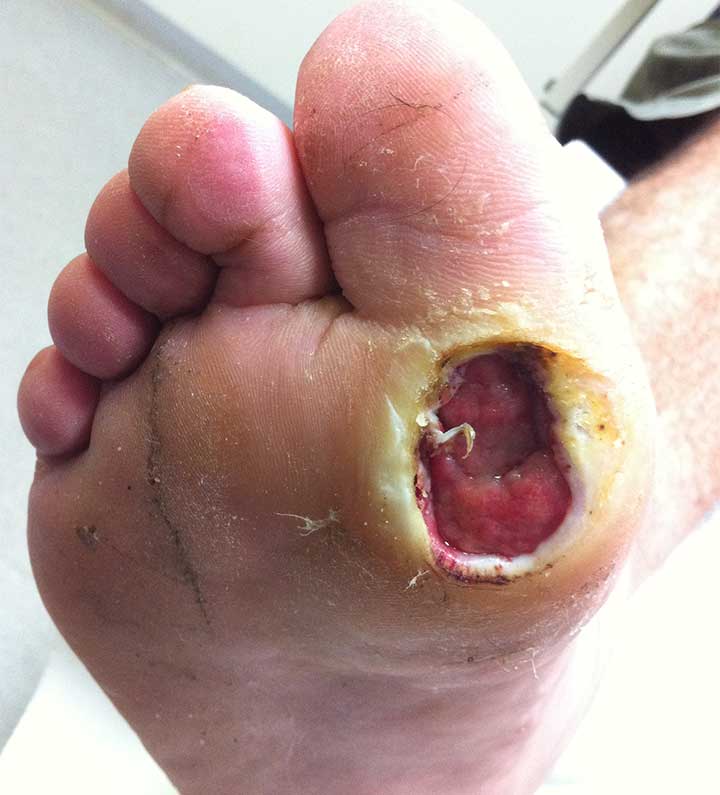
Wounds that won’t heal can be devastating
Carol Emanuele beat cancer. But for the last two years, the Philadelphia woman has been fighting her toughest battle yet. She has an open wound on the bottom of her foot that leaves her unable to walk and prone to deadly infection. In an effort to…
Ostomy

Frequently asked questions about support surfaces
The National Pressure Ulcer Advisory Panel (NPUAP) describes support surfaces as “specialized devices for pressure redistribution designed for management of tissue loads, microclimate, and/or other therapeutic functions.” These devices include specia…

Knowing when to ask for help
As a wound care expert, you’re probably consulted for every eruption, scrape, and opening in a patient’s skin. Occasionally during a patient assessment, you may scratch your head and ask yourself, “What is this? I’ve never seen anything like it.” Mo…
Business Consult
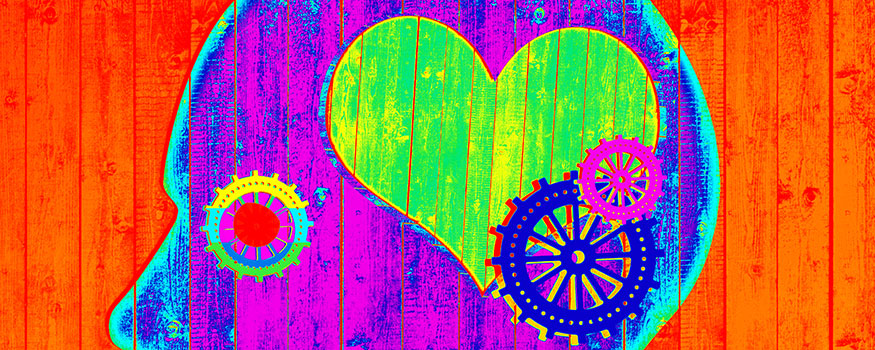
Practicing emotional intelligence may help reduce lateral violence
It’s been a stressful day at work—nothing new. One confused patient pulled off her ostomy bag, you’re having difficulties applying negative-pressure wound therapy on another, and a third patient’s family is angry with you. We all experience stressfu…

Understanding NPUAP’s updates to pressure ulcer terminology and staging
On April 13, 2016, the National Pressure Ulcer Advisory Panel (NPUAP) announced changes in pressure ulcer terminology and staging definitions. Providers can adapt NPUAP’s changes for their clinical practice and documentation, but it’s important to no…
ManukaMed USA, LLC Launches improved Honey Dressing and Receives Medicare HCPCS Coding
Medical gauze 101
By Nancy Morgan, RN, BSN, MBA, WOC, WCC, DWC, OMS
Each issue, Apple Bites brings you a tool you can apply in your daily practice.
Medical gauze, a bleached white cloth or fabric used in bandages, dressings, and surgical sponges, is the most widely used wound care dressing. Commonly known as “4×4s,” gauze is made from fibers of cotton, rayon, polyester, or a combination of these fibers. Surgical gauze must meet standards of purity, thread count, construction, and sterility according to the United States Pharmacopeia. (more…)
Read MoreWhat does it mean to participate in a wound care clinical trial?
By Susan Beard, RN, BS, CWOCN
Suppose you’re reading an article on a new product that states the product has been through a series of clinical trials before marketing. What does this mean? Who was involved? As a clinician, could you initiate or be involved in a clinical trial of a new product? Who are clinical trial subjects, and what’s it like for them to be involved in a clinical study?
A clinical trial starts as an idea. As clinicians, we often use our critical-thinking skills to imagine a product or method of practice we think could be created or improved on to better meet our patients’ needs. The idea begins to grow and a series of events begins. (more…)
Read More
